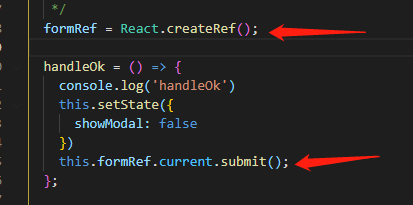我有我的工作文件夹设置为RAM驱动器。 在夜间出现了长时间停电时,UPS跑了出去,我的机器去了。 值得庆幸的是我搁置了我的变化之前,我就回家了,并且搁置在团队资源管理器是可见的。 该变更包括项目文件,尚未被添加到源代码控制一些新的文件。
我试图恢复受影响的文件,但我得到的错误:
试图查看搁置的文件给TF10187 (或一般的,未编号), The system cannot find the file specified ,即使我可以看到他们在Pending Changes列表。
试图取消搁置在全部集合给出了与错误, incompatible changes ,我解决不了。
我猜 TFS缓存搁置本地这已经重新初始化本身,并因此失去了缓存RAM光盘上,但我希望我是错的。
任何人都可以帮助?
我曾有人来找我,问同样的问题昨天,幸运的是他们有TFS项目数据库(tfs_)的备份,所以我们恢复是到另一个数据库和我戳周围,想通了(所以,如果你有一个备份,然后是的,你可以恢复所有文件)。
首先在数据库表中的所有提供一些信息。
搁置可以通过查询tbl_Workspace表,并与类型= 1(搁置),你当然也可以通过名称与工作区名列过滤器来查找所有记录来确定。
感兴趣的其他表如下:
tbl_PendingChanges(其中WorkspaceId从tbl_Workspace参考) - 哪些文件是搁置的部分
父路径和文件名的文件 - tbl_VersionedItem(通过项目Id列tbl_PendingChanges链接)
tbl_Content(通过FILEID挂PendingChanges) - 这是你的文件内容存储在为压缩(gzip的)数据
现在的解决方案; 下面的查询可以告诉你你的文件:
SELECT c.[CreationDate], c.[Content], vi.[ChildItem], vi.ParentPath
FROM [dbo].[tbl_Content] c
INNER JOIN [dbo].[tbl_PendingChange] pc ON pc.FileId = c.FileId
INNER JOIN [dbo].[tbl_Workspace] w ON w.WorkspaceId = pc.WorkspaceId
INNER JOIN [dbo].[tbl_VersionedItem] vi ON vi.ItemId = pc.ItemId
WHERE w.WorkspaceName = '<YOUR SHELVESET NAME>'
随着我写一些代码来获取数据从SQL回来,然后解压缩与GZipStream类的内容和保存文件从磁盘。
工作一个星期又回到了一个小时左右。
这与2010 TFS完成。
希望这可以帮助!
这里是TFS2015,它有其他模式的变化更新的响应。 下面是为txt文件写入到桌面一个C#控制台应用程序。 请务必填写CONNSTRING和shelvesetName变量。
using System;
using System.Data;
using System.Data.SqlClient;
using System.IO;
using System.IO.Compression;
namespace RestoreTFSShelve
{
internal class Program
{
private static void Main(string[] args)
{
string shelvesetName = "";
string connString = "";
SqlConnection cn = new SqlConnection(connString);
SqlCommand cmd = new SqlCommand(@"
SELECT c.[CreationDate], c.[Content], v.FullPath
FROM [dbo].[tbl_Content] c
INNER JOIN [dbo].tbl_FileMetadata f ON f.ResourceId = c.ResourceId
INNER JOIN [dbo].tbl_FileReference b ON f.ResourceId = b.ResourceId
INNER JOIN [dbo].[tbl_PendingChange] pc ON pc.FileId = b.FileId
INNER JOIN [dbo].[tbl_Workspace] w ON w.WorkspaceId = pc.WorkspaceId
INNER JOIN [dbo].[tbl_Version] v ON v.ItemId = pc.ItemId AND v.VersionTo = 2147483647
WHERE w.WorkspaceName = '@ShelvesetName'", cn);
cmd.Parameters.AddWithValue("@ShelvesetName", shelvesetName);
DataTable dt = new DataTable();
new SqlDataAdapter(cmd).Fill(dt);
foreach (DataRow row in dt.Rows)
{
string[] arrFilePath = row[2].ToString().Split('\\');
string fileName = arrFilePath[arrFilePath.Length - 2];
byte[] unzippedContent = Decompress((byte[])row[1]);
File.WriteAllBytes(Path.Combine(Environment.GetFolderPath(Environment.SpecialFolder.Desktop), fileName), unzippedContent);
}
}
private static byte[] Decompress(byte[] gzip)
{
using (GZipStream stream = new GZipStream(new MemoryStream(gzip), CompressionMode.Decompress))
{
const int size = 4096;
byte[] buffer = new byte[size];
using (MemoryStream memory = new MemoryStream())
{
int count = 0;
do
{
count = stream.Read(buffer, 0, size);
if (count > 0)
{
memory.Write(buffer, 0, count);
}
}
while (count > 0);
return memory.ToArray();
}
}
}
}
}
我有类似的事情发生在我身上了TFS 2012实例。 我的SQL查询有点不同,因为该架构改变TFS 2012年希望这可以帮助别人。
SELECT c.[CreationDate], c.[Content], v.FullPath
FROM [dbo].[tbl_Content] c
INNER JOIN [dbo].[tbl_File] f ON f.ResourceId = c.ResourceId
INNER JOIN [dbo].[tbl_PendingChange] pc ON pc.FileId = f.FileId--c.FileId
INNER JOIN [dbo].[tbl_Workspace] w ON w.WorkspaceId = pc.WorkspaceId
INNER JOIN [dbo].[tbl_Version] v ON v.ItemId = pc.ItemId AND v.VersionTo = 2147483647
WHERE w.WorkspaceName = @ShelvesetName
2147483647似乎是2 ^ 32 - 1,我认为可以代表在TFS 2012“最新”后来我也写了一个C#插件解压gzip压缩气流并将其与正确的文件名转储到磁盘。 我没有保护层次。
string cnstring = string.Format("Server={0};Database={1};Trusted_Connection=True;", txtDbInstance.Text, txtDbName.Text);
SqlConnection cn = new SqlConnection(cnstring);
SqlCommand cmd = new SqlCommand(@"
SELECT c.[CreationDate], c.[Content], v.FullPath
FROM [dbo].[tbl_Content] c
INNER JOIN [dbo].[tbl_File] f ON f.ResourceId = c.ResourceId
INNER JOIN [dbo].[tbl_PendingChange] pc ON pc.FileId = f.FileId--c.FileId
INNER JOIN [dbo].[tbl_Workspace] w ON w.WorkspaceId = pc.WorkspaceId
INNER JOIN [dbo].[tbl_Version] v ON v.ItemId = pc.ItemId AND v.VersionTo = 2147483647
WHERE w.WorkspaceName = @ShelvesetName", cn);
cmd.Parameters.AddWithValue("@ShelvesetName", txtShelvesetName.Text);
DataTable dt = new DataTable();
new SqlDataAdapter(cmd).Fill(dt);
listBox1.DisplayMember = "FullPath";
listBox1.ValueMember = "FullPath";
listBox1.DataSource = dt;
if(!Directory.Exists(txtOutputLocation.Text)) { Directory.CreateDirectory(txtOutputLocation.Text); }
foreach (DataRow row in dt.Rows)
{
string[] arrFilePath = row[2].ToString().Split('\\');
string fileName = arrFilePath[arrFilePath.Length - 2];
byte[] unzippedContent = Decompress((byte[])row[1]);
File.WriteAllBytes(Path.Combine(txtOutputLocation.Text, fileName), unzippedContent);
}
}
static byte[] Decompress(byte[] gzip)
{
using(GZipStream stream = new GZipStream(new MemoryStream(gzip), CompressionMode.Decompress))
{
const int size = 4096;
byte[] buffer = new byte[size];
using(MemoryStream memory = new MemoryStream())
{
int count = 0;
do
{
count = stream.Read(buffer, 0, size);
if(count > 0)
{
memory.Write(buffer, 0, count);
}
}
while(count > 0);
return memory.ToArray();
}
}
}





